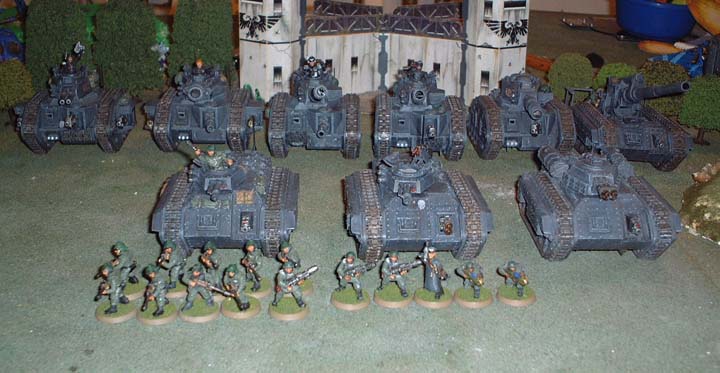| HQ |
|
|
Reich
Konsular (Commissar) Herbert von Lanne in his Vanquisher. Von Lannes
came to the 7th Panzer as regimental commissar and took command of 4th
Company in the heat of the Arannes tank battle when the previous
commander was martyred. Upon his personal request, and with the
approval of division, von Lannes stayed in command of the company.
|
 |
| TROOPS |
|
| Panzer vorwart! Reich
Konsular Lanne's tank is flanked by some of 4th Company's armor. Of
note is the Exterminator in the foreground. '402' denotes that this
must have been Leutnant Bauer's tank, the second-in-command of 4th
Company. |
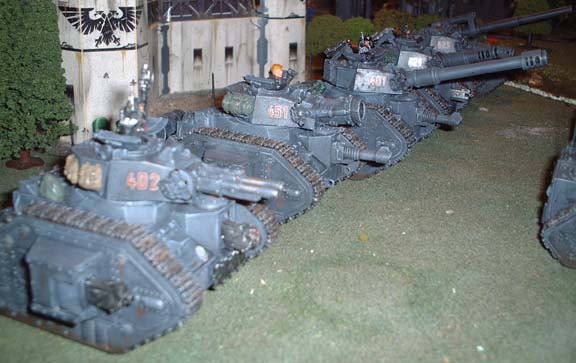 |
| The Hellhound shown here
was from 1st Company. Note too the lack of sponsons on the standard
Leman Russes. Most Brandenburger tanks operating in the Balau Sector
discarded their sponsons and lascannon hull armament due to the lack of
space in the transport ships that ferried them there. |
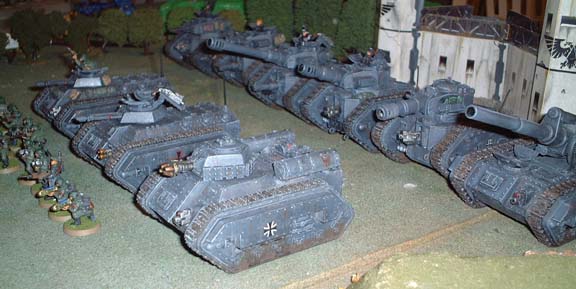
|
| Another pic of Imperial
armor of the 4th Company, this time showing some of the infantry
support from troops of the 6th Schutzen. |
 |
|
Panzer
grenadier, courtesy of the 6th Schutzen, which frequently detached
platoons to lend infantry support to 7th Panzer. Incidentally, this
practice was to lead to 6th Schutzen's conversion to a full-fledged
panzer grenadier unit later in its career.
Note that
the platoon command section was equipped with a disproportionate number
of melta and plasma guns, which was really against regulations. This
practice ended soon after the pic was taken.
|
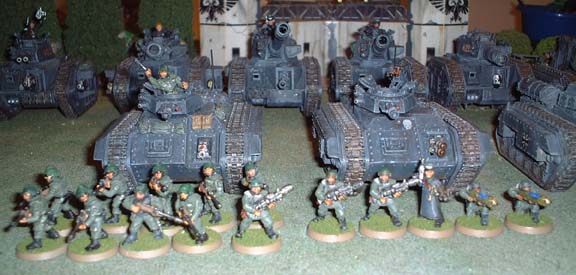 |
| Close-up of the panzer
grenadier command Chimera, clearly showing its deadly hull-mounted
heavy flamer. |
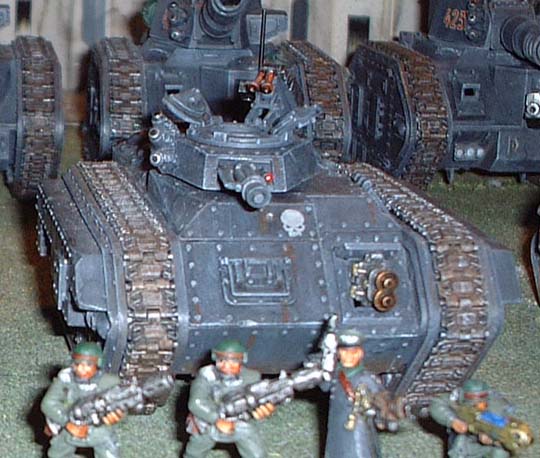 |
| This particular Chimera
happened to be the command vehicle of Captain Schaeffer from 6th
Schutzen. The infantry captain often loaned his Chimera to his troops
assigned to armored support duty. |
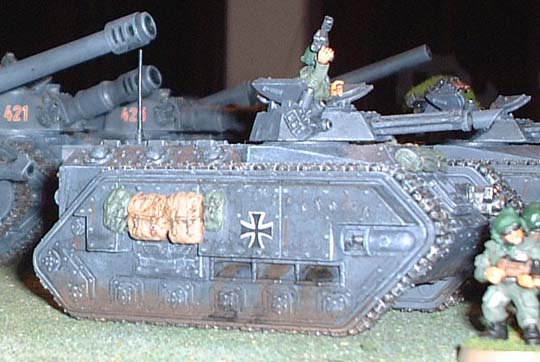 |
| FAST ATTACK |
|
| This particular
Hellhound assigned from 1st Company also saw action with the 6th
Schutzen. |
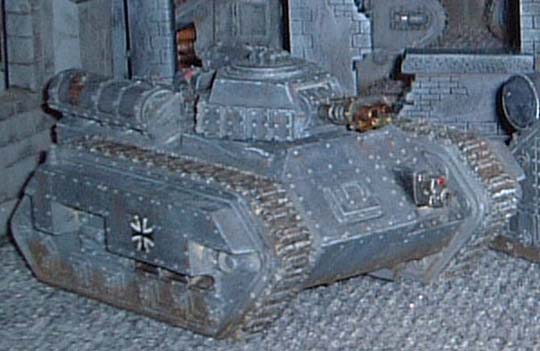 |
| HEAVY
SUPPORT |
|
| Basilisk from the 121st
Independent Artillery Company. Note the lack of gun-shield, a practice
employed by almost all Brandenburger Basilisk crew to give the vehicle
a lower silhoutte. |
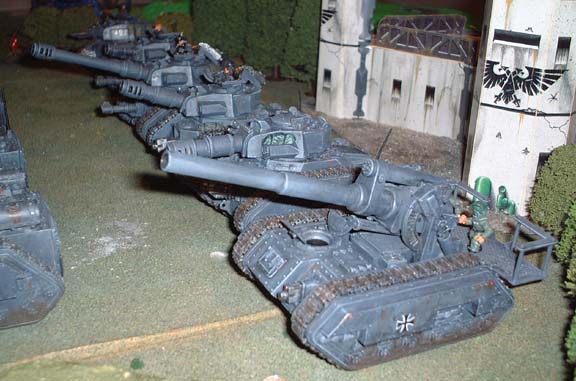 |
| This particular Leman
Russ Demolisher under the command of Gefreiter Pentaganet was later to
find fame as one of the division's top tank hunter, much to the chagrin
of the 7th Panzer Rgt, since the Demolisher was from an assault gun
battalion. Most of the tank kills were during the fierce cityfights of
Balau Prime, in which the Demolisher's unique abilities as a
short-ranged killer came to the fore. |
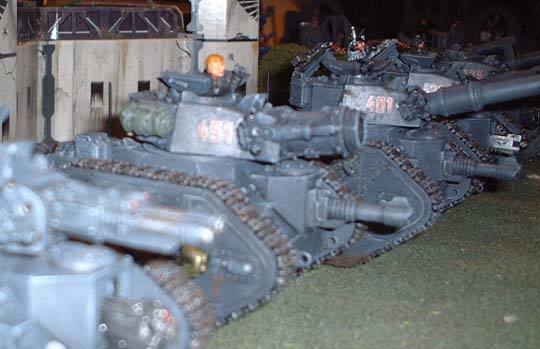 |
| OTHER |
|
| Very early days. This
pic was taken in Eschen at one of Brandenburg's 700 manufactoriums. All
the factory-fresh armor pictured here were destined for units in the
7th Panzer Division. |
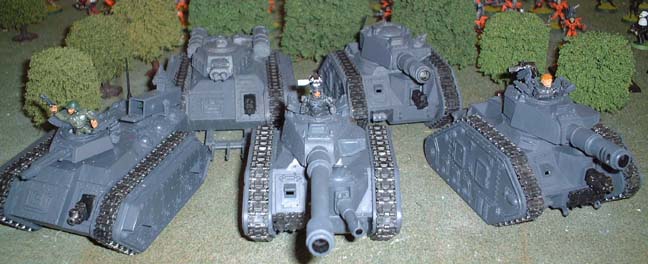 |
